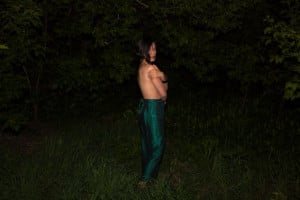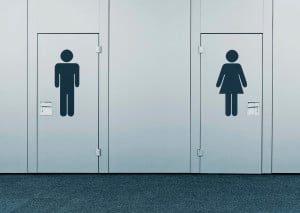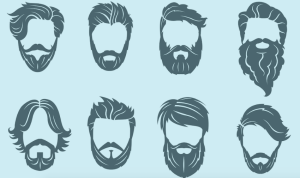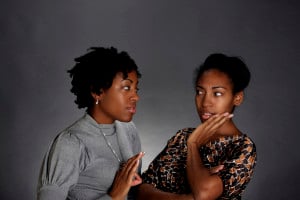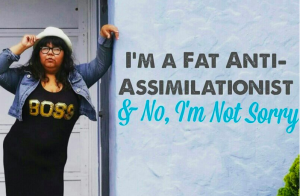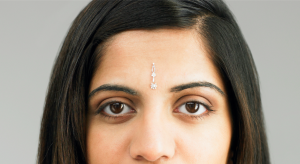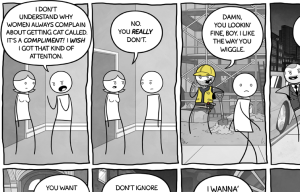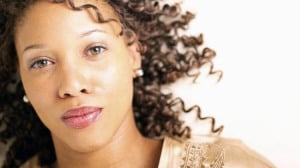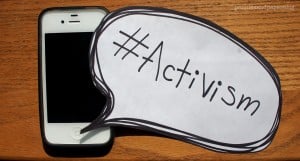(Content Warning: Sexual violence, physical violence, misogynistic slurs, racial slurs)
Originally published on xoJane and republished here with their permission.
“I am not wrong: Wrong is not my name.” —June Jordan, “Poem About My Rights”
This is a love story between a woman and her body.
When the doctor asked me why I wanted to begin the hormone therapy that would lower my production of testosterone and increase the level of estrogen in my body, I gave the answer that I knew was the safest to give.
Even in French (I live in Montreal, where many public services are conducted in la langue de Molière), my third language, the words were so familiar that I could feel them echoing as they rolled bitterly off my tongue:
“Depuis mon enfance, je me suis senti comme si je suis née dans le mauvais corps.”
“Since childhood, I’ve felt like I was born in the wrong body.”
This is the answer that the doctor was expecting, a story that was written before I was born by Western media and the psychiatric profession, a phrase that I knew would unlock the door to the medical care that I needed, as it has for so many transpeople before me.
This is the transgender story that has been sensationalized and capitalized on by Western media from Tyra Banks to the BBC to Katie Couric for decades, since a transwoman named Christine Jorgensen became the first person to become famous for undergoing sex reassignment surgery in the 1950s.
This is the narrative that most people, trans and cisgender alike, are first exposed to when confronted with the fact of transpeople’s existence.
Indeed, many trans people do identify with the feeling of being trapped in the wrong skin, and they are perfectly right in doing so. I, however, don’t.
That story is not, has never been, mine. And given the chance to answer the question of why I wanted to medically transition honestly, I would say: (This is a love story between a woman and her body.)
It has always been easiest to hate my physical self – it is easy, I think, for all women to hate our bodies, because this is what we are taught to do. We are taught that if only we were differently shaped – taller, thinner, more angular, whiter – then we might finally be worthy of being called beautiful, of being protected from violence, of being loved.
Our bodies exist in constant conversation with the expectations, desires, demands of others. We are taught that our bodies are always failing us, because they are failing to live up to the shape that other people have told them to be.
I first learned this lesson as a four-year-old, when I was told for the first time that my penis meant that I had to be a boy, regardless of what I believed or wanted.
Transpeople know the feeling of body failure with a deep and terrible intimacy: After all, trans communities have long used the term “passing” to describe the experience of being able to go undetected as trans.
For many, if not most, trans folks, passing is essential to survival in a hostile world. Passing means access to employment, relative safety, friendship, dating, social services.
Yet the truth is that for most trans bodies, passing is not always an option. The truth is that sooner or later, the moment comes when even the “best-looking” trans person who has completed all of the steps of medical transition does not pass, if only when they look in the mirror. In that moment, it’s so very easy to believe that our bodies – that we – have failed.
I was angry at my body for a long time, since before I knew the word “transgender.” I was angry at it when it meant that I wasn’t allowed to play with girls, dance, express myself without being punished. I was angry at my body as a teenager, when it began to surge with forbidden sexual desires.
I was angry at my body for being racialized, male, unattractive to the white gay men in my life who seemed to have sex so freely with each other. I hated my body when it was harassed and attacked, over and over, in the street for wearing a dress. When it was beaten, and not strong enough to resist. When it was raped, and unable to say no. I have hated my body enough for one lifetime.
(This is a love story between a woman and her body.)
As a clinical social worker, I have been trained to assess the “validity” of transgender clients’ identies. One of the classic psychiatric criteria that exists and is widely used to this day is the question of how such individuals feel about their bodies: to qualify for a diagnosis of gender dysphoria, which is the distress or discomfort that occurs when the gender someone is assigned does not align with their actual gender, (that is, to be “really” transgender), trans people must often express complete repudiation of their genitals and secondary sex characteristics.
(While the precise guidelines in the psychiatrists’ bible, The Diagnostic and Statistical Manual, have become more flexible over time, the reality is that many healthcare practitioners operate based on personal and/or outdated standards.)
The result is that transgender identity becomes defined in terms of disgust, hatred, dysphoria, disease. Our bodies become a condition to be cured, a mistake to be corrected, freakish, abominations.
Outside the medical field, the view of our bodies as wrong persists to the extent that they are targeted for destruction. We are always the wrong body for the bathroom, for the classroom, for the job, for sex, for existence.
In 2002, a young woman named Gwen Araujo was beaten to death when some of her sexual partners discovered that she had “male” genitalia. In 1995, Tyra Hunter was denied emergency medical care in the aftermath of a car accident by a paramedic who, upon cutting open her pants, declared, “This bitch ain’t no chick. It’s a n**ger. He got a dick.”
It is only recently, looking back, that I have begun to recognize the endurance and accomplishment of my body: the incredible tenacity of a body that breathed and struggled and fought for me even while I raged against it.
A body that survived bad decisions, sexual assault, and both times, I tried to kill it. A body that saw me through self-loathing to self-forgiveness. I began to see that my body was not the cause of the hatred directed against me – society did that. My body did not fail to protect me when I was attacked; I did not deserve violence. My body has never been wrong. Someone else decided that.
(This is a love story between a woman and her body.)
In pre-colonial times, indigenous cultures all over the world knew of, included, and honored a vast array of gender-diverse traditions, from the mahu of the Hawaiian islands, to the kathooey and hijra in South Asia, to the Two-Spirit peoples of the First Nations and Native Americans.
Some of these people altered their bodies in order to fully express their gender identities, while others used clothing and social roles to define themselves.
Looking to these traditions, I am inspired to recreate my own gendered self outside of the Western, medicalized narrative of dysphoria and disease that has been forced upon me – to, in the words of transpinay activist Sass Rogando Sasot – “reclaim this body from those who want it to breathe and be fed by their dogmas.” I can relate to my body, transform my body, from a place of joy instead of anger and fear.
There are some for whom catch phrases such as “born this way” and “trapped in the wrong body” make trans people acceptable because the narratives they represent render us passive victims of our own freakishness – and so they justify our existence outside the gender norm.
The implication is that no one could or should choose to be as horrifyingly wrong as my body makes me. But I do not believe that one requires justification to live and identify as one chooses. When I decided to start hormone therapy, I did not do it because I hated my body.
I did it so the world would see my gender closer to the way I do. I did it because I loved myself, because my body is mine, and because I am the one who decides how to navigate it through this complicated and violent world.
As a social worker, I have often encountered trans people from as young as ten to as old as sixty just beginning to consider transition, in all of the word’s many meanings. Many are anxious, some are frantic to know what their bodies will look and feel like “after,” if they will “pass.”
They want to know what the right decision is. I do not know the answer. What I do know is this: You were beautiful then. You are beautiful now. Whatever you choose, you always will be.
This is a love story between a woman and her body.
[do_widget id=’text-101′]
Kai Cheng Thom is a writer, performing artist, and clinical social worker based in Montreal. Their writing has appeared in Youngist, Matrix Magazine, and The McGill Daily, among other places.

Search our 3000+ articles!
Read our articles about:
Our online racial justice training
Used by hundreds of universities, non-profits, and businesses.
Click to learn more


